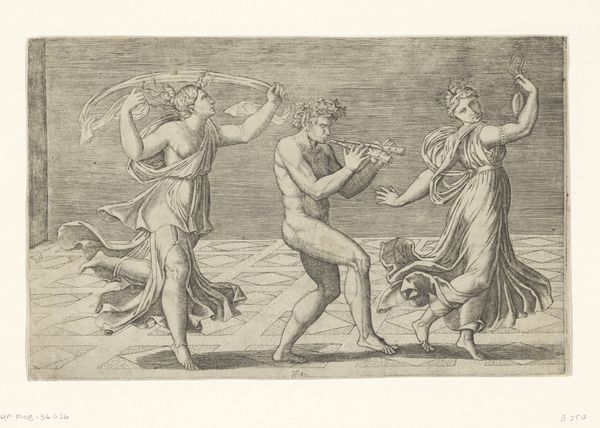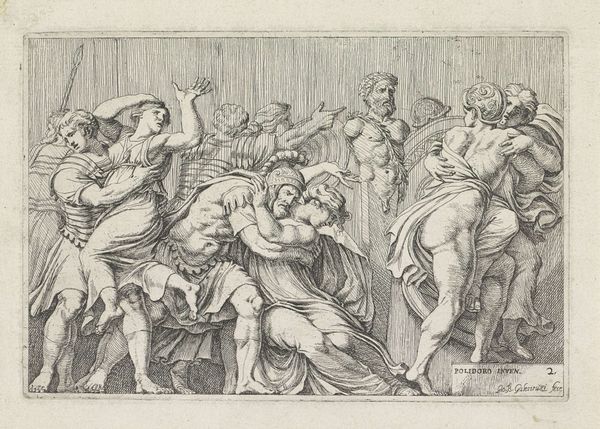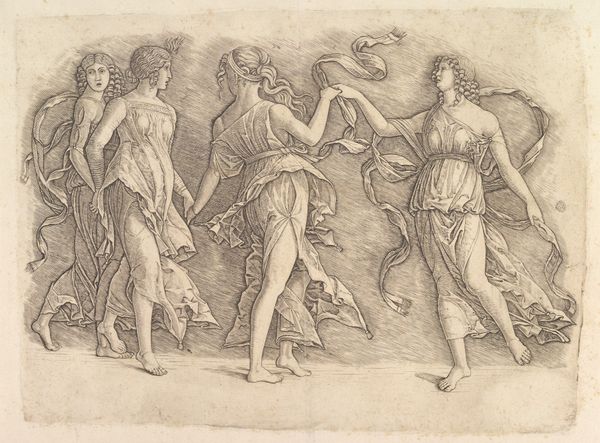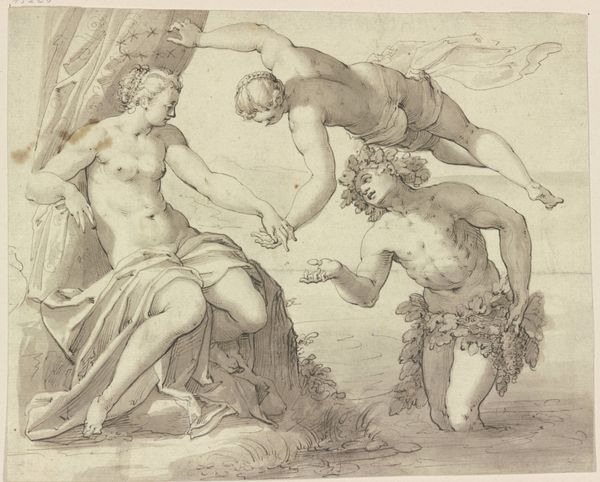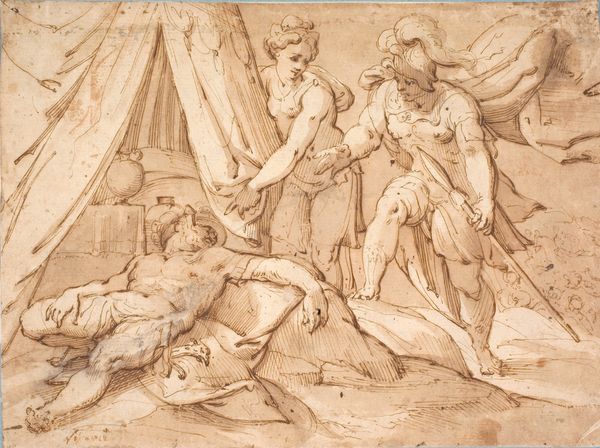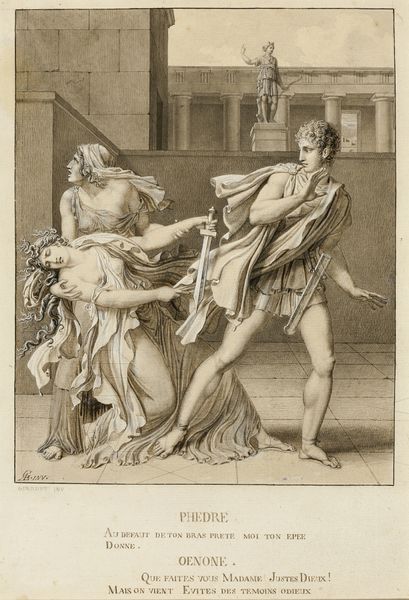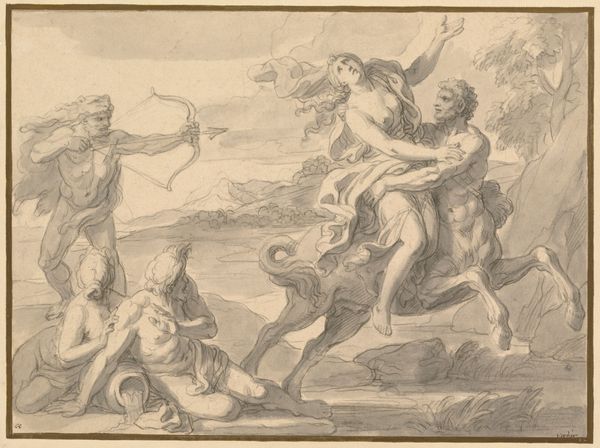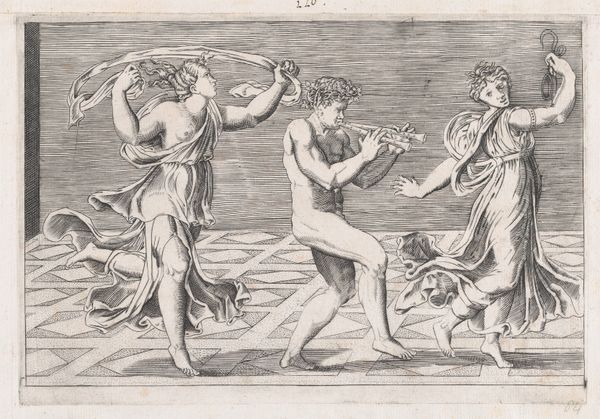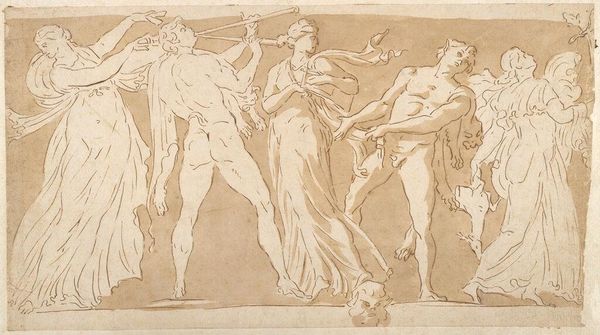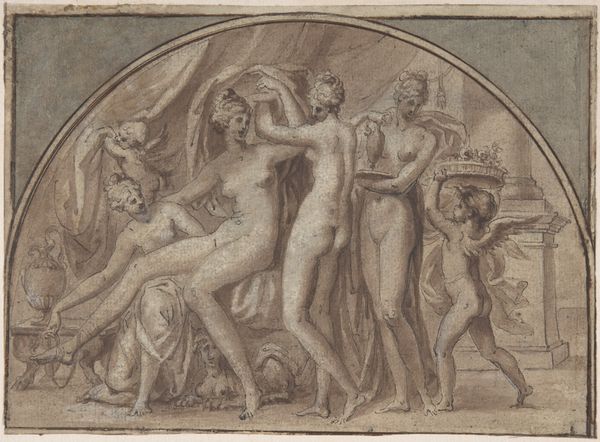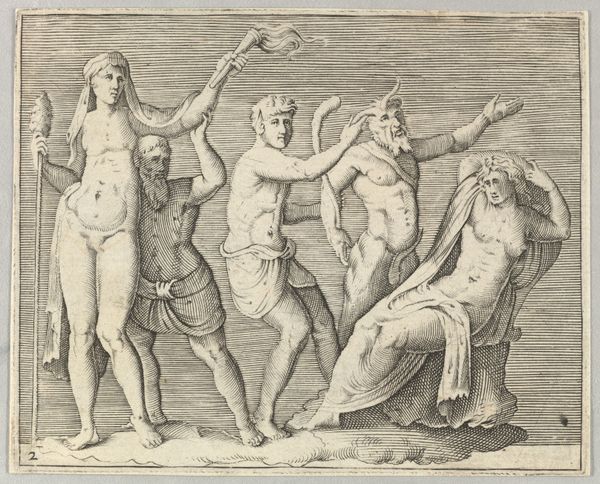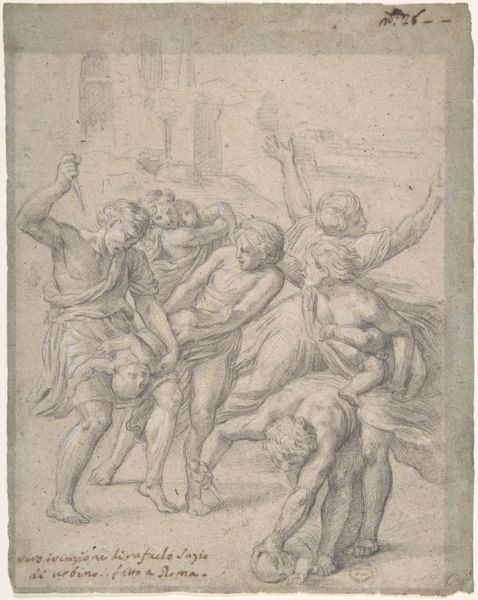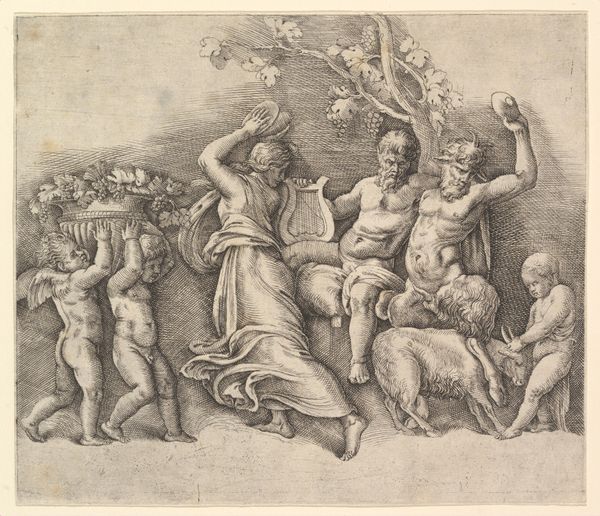
Amphion and Zethus Delivering their Mother Antiope from the Fury of Dirce and Lycus 1789
0:00
0:00
drawing, print, paper, pencil
#
drawing
#
neoclacissism
#
narrative-art
# print
#
pencil sketch
#
classical-realism
#
charcoal drawing
#
figuration
#
paper
#
11_renaissance
#
pencil drawing
#
pencil
#
history-painting
#
academic-art
Dimensions: 161 × 292 mm (primary support); 233 × 357 mm (secondary support)
Copyright: Public Domain
Editor: Here we have John Flaxman’s pencil drawing from 1789, "Amphion and Zethus Delivering their Mother Antiope from the Fury of Dirce and Lycus." The figures feel so poised, despite the obvious drama of the scene. What's your interpretation of the dynamics playing out here? Curator: Flaxman presents a striking neoclassical tableau, doesn't he? The almost sculptural treatment of the figures is telling. Think about what Flaxman and his contemporaries were striving for – a revival of classical ideals of beauty and civic virtue. It's a direct reaction against what they perceived as the excesses of the Rococo period. This drawing, with its linear precision and emphasis on the heroic nude, places itself firmly in that movement. How does this image engage with, or perhaps even challenge, contemporary social values? Editor: I guess I see how the stoic expressions could be seen as virtuous, a contrast to the flamboyant Rococo period... The central male figure certainly has a heroic physique. Do you think that's a purposeful political statement? Curator: Absolutely. Flaxman and his contemporaries were deeply interested in the civic role of art, and the potential to shape public opinion. The depiction of masculine virtue wasn’t just aesthetic; it was about projecting an image of strength, rationality, and moral uprightness – qualities valued by the Enlightenment thinkers and, later, by revolutionaries. Editor: So, it's less about just illustrating a myth, and more about presenting a particular political idea? Curator: Exactly. It uses the language of antiquity to comment on contemporary debates about virtue, governance, and the role of the individual in society. It's all incredibly calculated, carefully positioning itself within the cultural landscape of the late 18th century. What does the absence of color contribute? Editor: That's interesting – it focuses my attention on the stark contrast of lines rather than emotion expressed through color. I see how much thought went into something that looked so simple at first. Curator: Indeed! It underscores how an artwork operates within, and actively shapes, the socio-political landscape of its time. This really opened up a new dimension for thinking about visual choices.
Comments
No comments
Be the first to comment and join the conversation on the ultimate creative platform.
